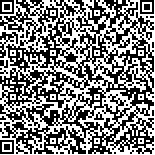| 引用本文: | 顾志峰,王文,杜开和,吴庆龙,李文朝,陈亚芬.中华绒螯蟹"颤抖病"病原、病理学初步研究.湖泊科学,2000,12(4):367-372. DOI:10.18307/2000.0411 |
| GU Zhifeng,WANG Wen,DU Kaihe,WU Qinglong,LI Wenchao,CHEN Yafen.Etiological and Pathological Study on "Appendage Shaking Disease" of Eriocheir sinensis. J. Lake Sci.2000,12(4):367-372. DOI:10.18307/2000.0411 |
|
| |
|
|
| 本文已被:浏览 6186次 下载 2626次 |

码上扫一扫! |
|
|
| 中华绒螯蟹"颤抖病"病原、病理学初步研究 |
|
顾志峰1, 王文1, 杜开和1, 吴庆龙2, 李文朝2, 陈亚芬2
|
|
1.南京师范大学生命科学学院, 南京210097;2.中国科学院南京地理与湖泊研究所, 南京210008
|
|
| 摘要: |
| 本文对健康和患"颤抖病"的中华绒螯蟹 (Eriocheir sinensis)进行超微病理学研究,在病蟹中发现类立克次体生物大量寄生.该微生物多呈球状或棒状,直径在 0.2 2-0.35μm之间,具细胞壁和细胞膜,但无典型的细胞核.该微生物在发病初期主要出现于血细胞中,发病晚期大量出现于鳃腔中和心脏、附肢肌肉、消化道、消化腺和生殖腺中的结缔组织及神经胶质中.回感实验表明该生物是江苏淮阴地区河蟹"颤抖病"的病原体,还对其致病机理进行了初步分析和讨论. |
| 关键词: 中华绒螯蟹 颤抖病 类立克次体 病理学 |
| DOI:10.18307/2000.0411 |
| 分类号: |
| 基金项目:中国科学院与江苏省院省合作研究项目. |
|
| Etiological and Pathological Study on "Appendage Shaking Disease" of Eriocheir sinensis |
|
GU Zhifeng1, WANG Wen1, DU Kaihe1, WU Qinglong2, LI Wenchao2, CHEN Yafen2
|
|
1.College of Biological Science, Nanjing Normal University, Nanjing 210097, P.R.China;2.Nanjing Institute of Geography and Limnology, Chinese Academy of Sciences, Nanjing 210008, P.R.China
|
| Abstract: |
| In this paper, the pathology of "Appendage Shaking Disease" is studied by comparing normal and affected crabs via ultratructural investigation.A microoganism, whose size is between virus and bacterium, measured 0.22-0.35μm, is granular or clavate, bounded by a cell wall and a membrane, but it has nonucleus.In early stage of infection, the microorganisms are mainly located in blood cells, and in the last stage, most ROLs are distributed in the connective tissue of nervous organization, gill cavity, heart, periopod muscle, and digestive system.According to their size;shape, inner structure, locating places, and propagation mode, it can be inferred that they are Rickett sia-like organisms (RLOs)which should be the pathogens of "Appendage Shaking Disease".The pathogeny of RLOs is analyzed and discussed in this paper as well. |
| Key words: |
|
|
|
|